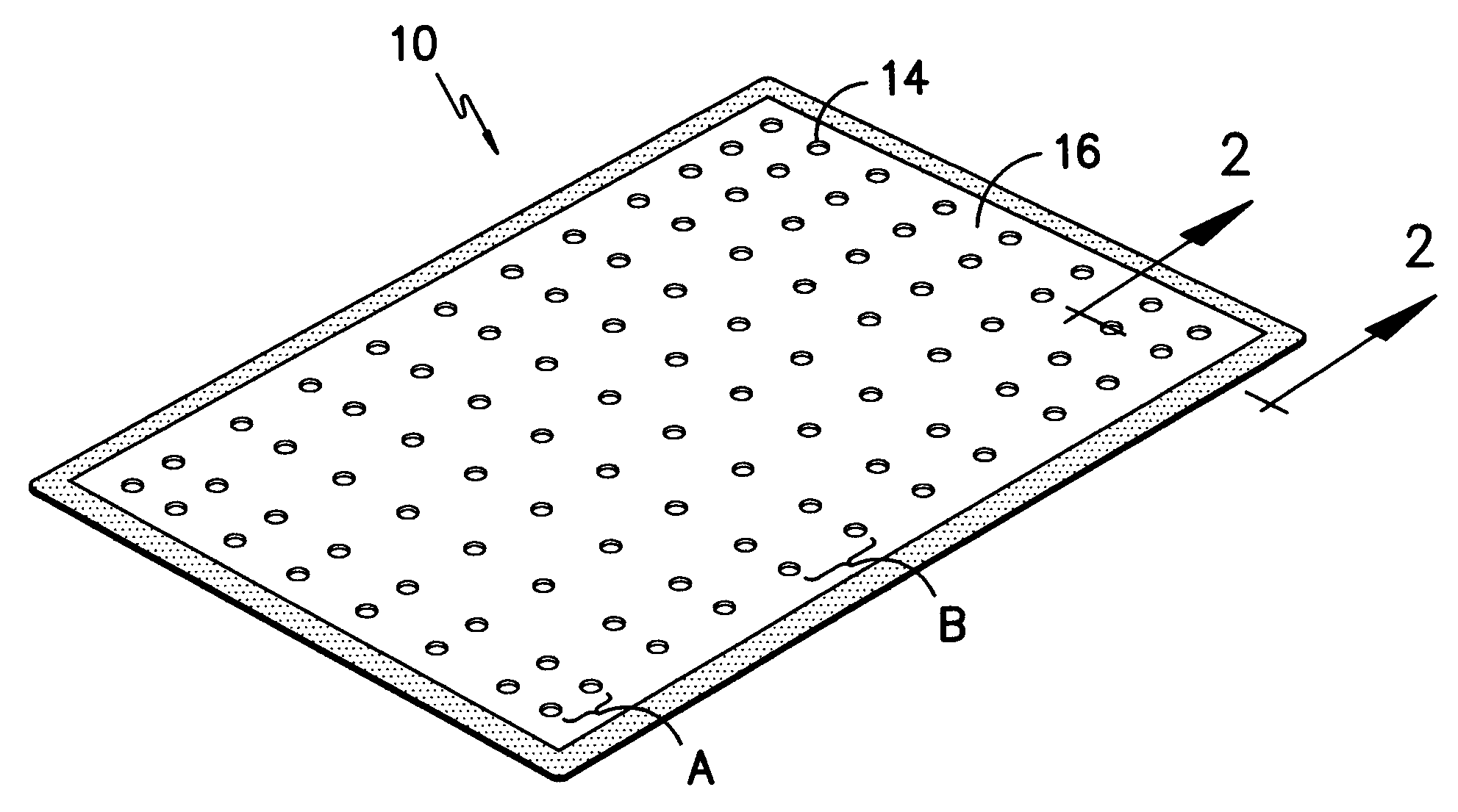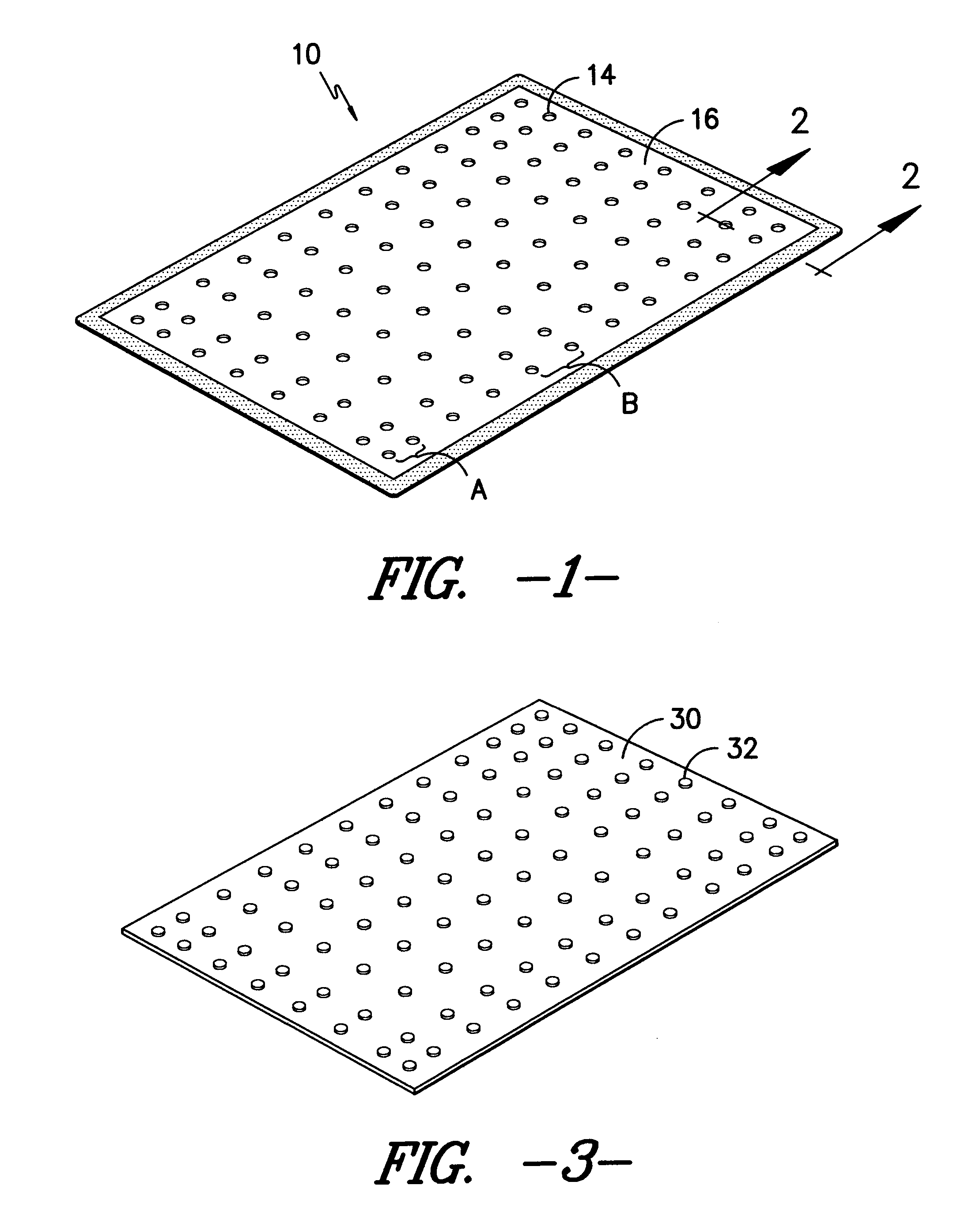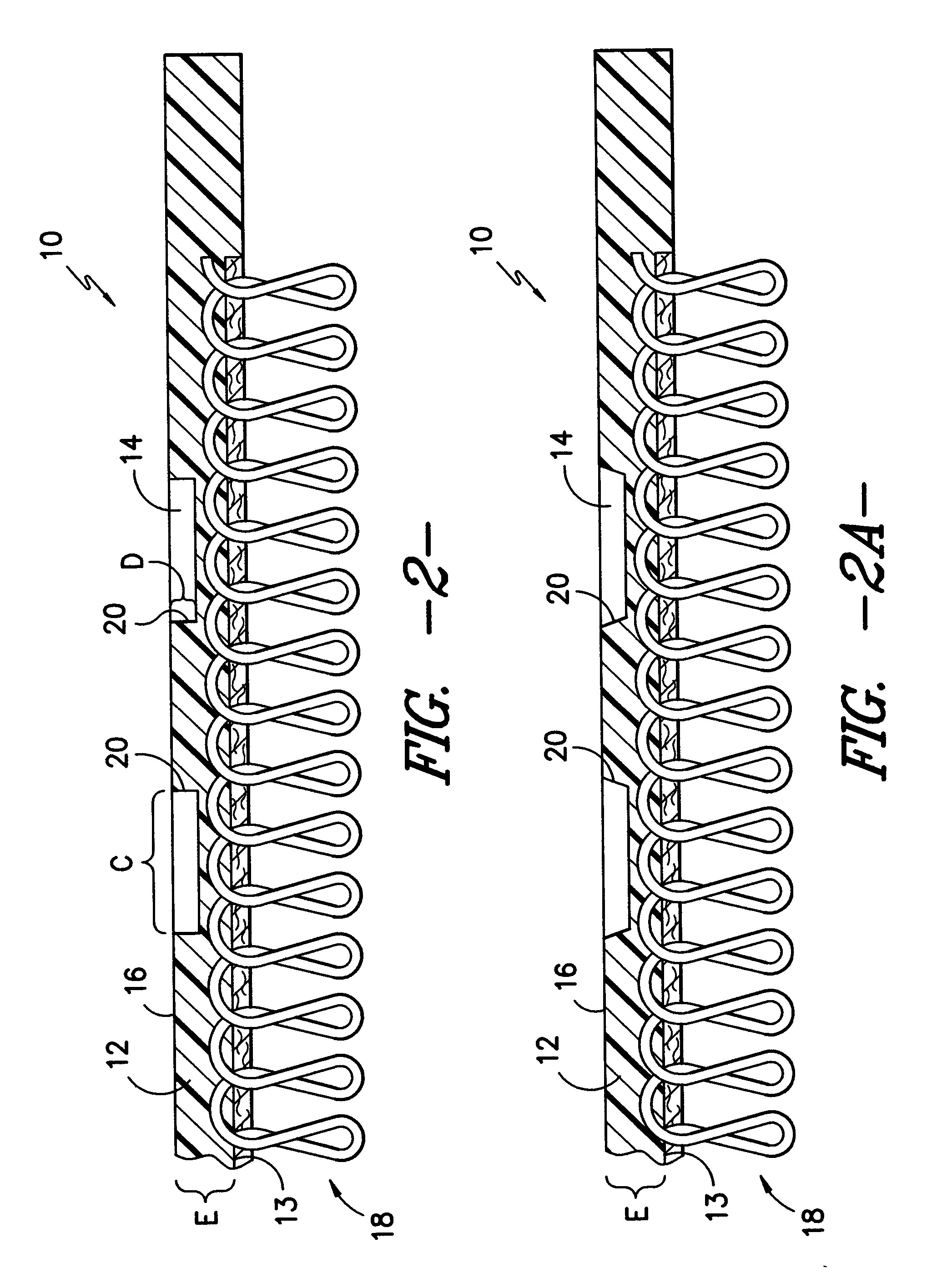Non-migrating floor mat
a floor mat and non-migration technology, applied in the field of non-migration floor mats, can solve the problems of creating tripping hazards, additional labor and time to return the mats, and the approach did not prevent the displacement of the mats on smooth floors, so as to improve the stability of the floor, improve the stability, and improve the effect of structural sound
- Summary
- Abstract
- Description
- Claims
- Application Information
AI Technical Summary
Benefits of technology
Problems solved by technology
Method used
Image
Examples
example 1
[0029] A first mat having a mat size of 3 feet by 10 feet, weighing approximately 21 lbs., and having the features described above, including a base layer made of rubber that is bonded to a top layer of fabric, a smooth bottom surface, and a plurality of depressions having diameter of approximately 1 inch and a depth of approximately 0.125 inches, was subjected to the Kex Walk Test as described above. The mat was first washed with a non-ionic detergent at 140° F. Thereafter, the mat was placed on a hard tile floor surface over tape markers. Next, a walker pushing a grocery cart that was loaded to give the cart a total weight of 100 lbs. passed over the mat 50 times.
[0030] Comparatively, a second mat having a mat size of 3 feet by 10 feet and weighing approximately 12 lbs. was also subjected to the same Kex Walk Test. The second mat also included a base layer of rubber bonded to a top layer of fabric. However, the second mat did not include a smooth bottom surface and a plurality of...
PUM
| Property | Measurement | Unit |
|---|---|---|
| Length | aaaaa | aaaaa |
| Length | aaaaa | aaaaa |
| Thickness | aaaaa | aaaaa |
Abstract
Description
Claims
Application Information
 Login to View More
Login to View More - R&D
- Intellectual Property
- Life Sciences
- Materials
- Tech Scout
- Unparalleled Data Quality
- Higher Quality Content
- 60% Fewer Hallucinations
Browse by: Latest US Patents, China's latest patents, Technical Efficacy Thesaurus, Application Domain, Technology Topic, Popular Technical Reports.
© 2025 PatSnap. All rights reserved.Legal|Privacy policy|Modern Slavery Act Transparency Statement|Sitemap|About US| Contact US: help@patsnap.com



